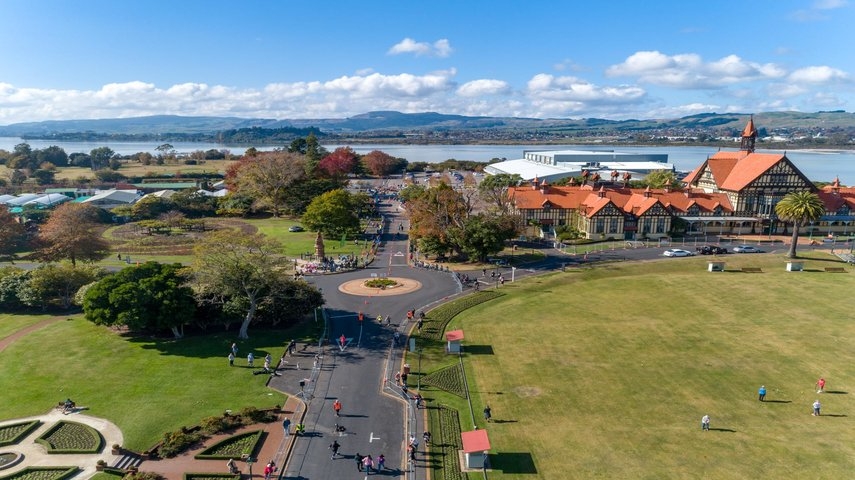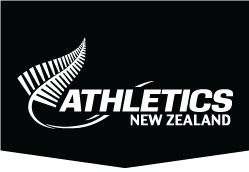News & Updates
From humble beginnings to iconic marathon

Steve Landells takes a look back at the rich and glorious history of the 56-year-old event.
When eight trailblazing runners set off to complete the first recorded marathon around Lake Rotorua in 1962 for the Rotorua Athletic and Harrier Club championship, nobody could have predicted how ‘the race’ would evolve into New Zealand’s most iconic marathon.
Yet this was the humble genesis of a race that has attracted thousands of runners over the decades to “run the lake” and has consistently provided some of the highlights of New Zealand domestic marathon running.
In that low-key 1962 event, only two of the eight runners completed the challenge but the notion of the running circumference of Lake Rotorua totalling the full marathon distance of 42.2km was to prove an intoxicating allure.
Dennis Kenny, former Rotorua Athletic and Harrier Club secretary who served as Rotorua Marathon race director for 35 years, says the race started with humble but honourable intentions.
“We had other club distances and events such as the shot put and 100m, so we saw no reason why we shouldn’t have a club marathon championships,” he explains.
For the next two years, the race remained a club championship event but by the mid-1960s and with the jogging boom gathering momentum – partly fuelled by the success of Arthur Lydiard-coached athletes Sir Peter Snell and Sir Murray Halberg – Rotorua Harriers responded to the changing running environment by making the 1965 edition an open event and inviting runners from clubs in Whakatane and Hamilton.
With a member of the committee also working for Fletcher Timber Company, he successfully persuaded the construction giants to sponsor the event and commit to offering some prize money.
On April 10 in 1965, 16 entrants – all of whom were men – took to the start line for the inaugural Fletcher Rotorua Marathon. Just 12 completed the course with Dave Heine winning in a time of 2:35:04. But, most importantly, the race had proved a hit with runners and sponsors alike.
“Fletcher laid on an afternoon tea at the factory and enjoyed themselves so much they decided to continue to sponsor the event the next year,” adds Dennis. “Nobody thought back then in their wildest dreams, however, that marathon numbers would grow to what they did in the 1970s and 1980s.”
In one of the longest running sponsorship deals in New Zealand sporting history, Fletcher remained the race sponsor for the next 35 years. During that time the race built up a reputation as New Zealand’s finest and the entry numbers exploded.
The race attracted more than 100 entrants for the first time in 1970. By the time of the 1977 edition – the first in which the course took on its existing clockwise route around the lake – entry levels smashed through the 500 mark. Such was the staggering pace of the running boom and rising popularity of the race, the following year entry numbers had more than doubled to in excess of 1,100.
The 1970s served up some world-class victors. The 1974 Commonwealth marathon silver medallist and two-time Olympian Jack Foster won the race on four occasions. Meanwhile, 1968 Olympic marathon bronze medallist Mike Ryan was triumphant in the 1971 race.
Women were officially allowed to enter for the first time in 1974 with Palmerston North mother-of-four Val Darroch victorious, completing the 42.2km distance in 3:39:44.
The size and scale of the event reached even bigger heights in the 1980s as the entry numbers continued to soar.
Throughout the decade, the event consistently attracted upwards of 2000 runners with the star performer of the decade Paul Ballinger winning the race three times and posting the course record time of 2:16:05 in 1988 – a mark which still exists today.
In terms of sheer numbers, the race enjoyed its high point at the 25th anniversary edition in 1989 – attracting a record 5967 starters, the largest number for any marathon in New Zealand.
The entry numbers remained consistently above 2000 throughout the 1990s and more cool innovations were implemented. In 1993, the Survivors Club was set up for all those runners who had completed 15 editions of the Rotorua Marathon. The club – which today boasts more than 500 active members – is a close-knit and unique organisation in which every member is presented with an official Survivors polo shirt embroidered with club logo.
Of the current members, Michael Stewart has racked up more than 40 appearances in the race while in this year’s re-scheduled race Verna Cook-Jackson is set to become the first woman to achieve the feat.
The race has also long boasted a genuine community feel. One regular feature of the race was local schools manning the aid stations and also being paid for their efforts. Marathon clinics have also long been a key part of the event.
Dennis signed off his long-standing role as race director in unfortunate fashion at the 1999 edition, having to cancel the race just ten minutes before the scheduled start due to flooding.
Pam Kenny, wife of Dennis, who also played a key role in the organising committee, recalls of the race: “From the Friday evening we had a torrential downpour across the Rotorua basin and the area just could not cope. We didn’t realise just how bad it was until we got a call from one of the committee members based out on the back of the course. He said parts of the road were starting to wash away. The Civil Defence wouldn’t make a decision so it was left to Dennis and the other organisers to cancel while the runners had already made their way to the start line.”
After 35 years in the role, the 1999 event represented the end of an era. The long-time organisers, who now worked for the amalgamated Lake City Athletic Club, were keen to relinquish control and in 2000 Athletics NZ came on board as event owners with enduring royalties to the club. However, the club – and the Kennys – still had a role in the behind-the-scenes organisation of the event.
The new millennium has presented challenges. The proliferation of running races, as well as other sporting and leisure pursuits, has added competition. But, thanks to the efforts of Athletics NZ and a significant amount of help from Lake City Club members, the event remains in good health.
In 2011, Athletics NZ appointed Rotorua-based Event Promotions Ltd as event managers and a new half-marathon event was launched as an additional event onto the Rotorua Marathon programme.
Today, the event runs not only the full marathon and half-marathon – completed in the stunning Whakarewarewa Forest – but also a 10km race through the Whakarewarewa Forest and geothermal Sulphur Flats, as well as a 5.5km option for all of those aged ten and above.
The modern day Rotorua Marathon may look a million miles from the 1965 inaugural event but the very essence of the event remains the same – to run the circumference of Lake Rotorua.
In many respects, it remains the simplest and most alluring of equations and, with the 56th edition set to run on the rescheduled date of September 26, there is still an opportunity for entrants to run in the footsteps of legends.
For more information and to sign up for the Rotorua Marathon please click here
Athletics New Zealand members receive $15 off entry to the Rotorua Marathon (any distance). Please email marathon@athletics.org.nz for the code.
